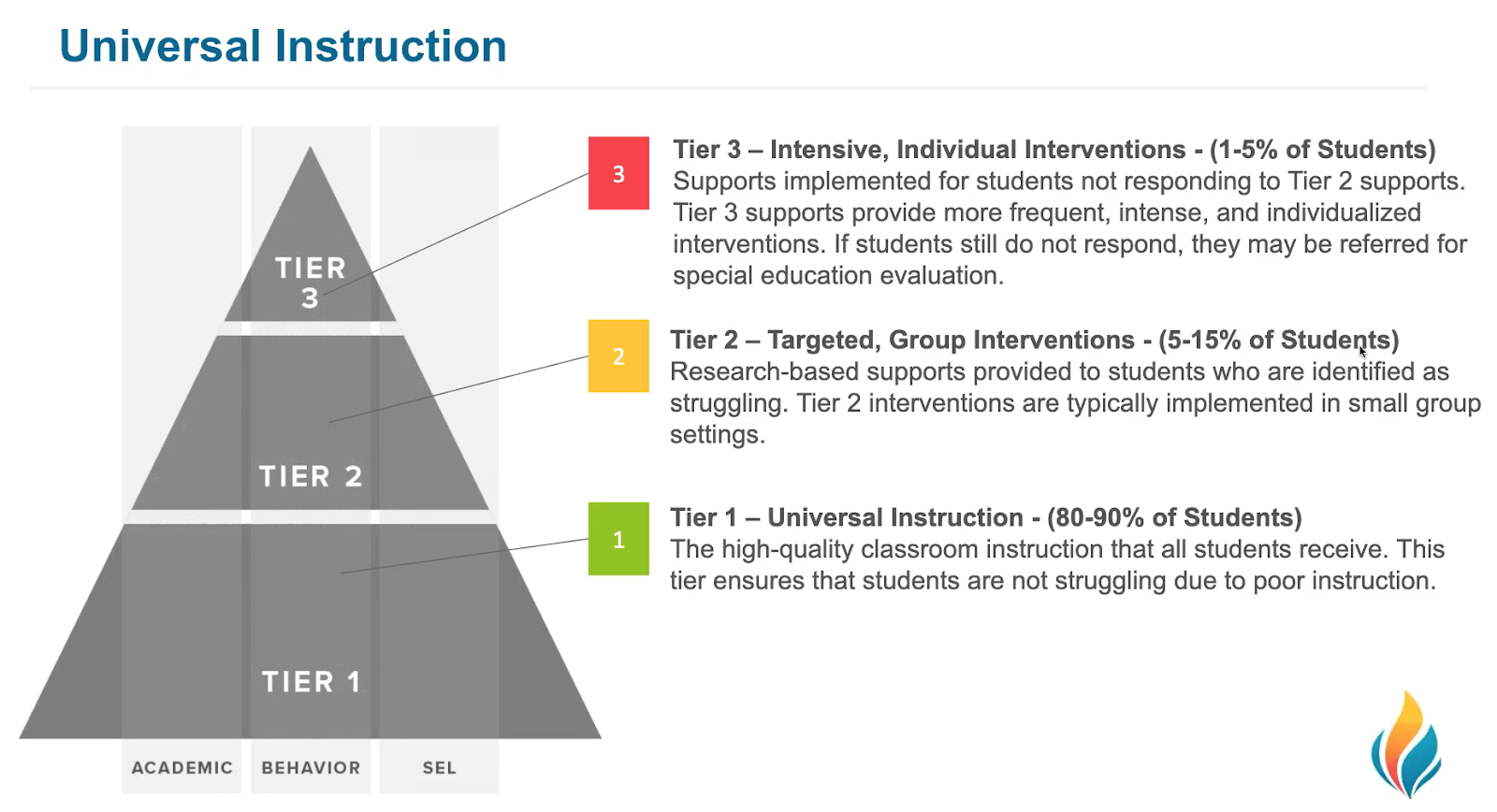By: Jessie Kember, Ph.D., NCSP
Screening is the administration of a reading, math, or behavioral assessment for the purpose of identifying students who may benefit from additional instructional support or intervention. Screening information can also help educators determine appropriate resource allocation at the building or district level. Screening is a universal practice within a multi-tiered system of support (MTSS) that occurs several times throughout the school year: fall, winter, and spring. In other words, all students are assessed during designated screening periods. Screening is part of the problem identification stage described in recent blogs.
Spring Screening Period
To view the screening period date on the FastBridge Learning® website, after navigating to the Screening tab, hover your mouse over the screening period name (i.e., “winter”). See the orange arrow below. In the example below, the identified winter screening period occurs between November 1st, 2017 and January 10th, 2018. Assessments may only be administered on one occasion per student during the designated screening period. It is also important to know that all screening periods are identified and set by your district manager at the beginning of the year.

Any scores collected during the screening period will be color-coded according to school norms (i.e., percentile groups) on the various reports. Scores collected outside of the screening period display in gray on the reports.
Spring Screening Assessments
FastBridge Learning® offers a suite of screening assessments, including the following:
- CBMReading
- CBMMath (Automaticity, CAP, and Process)
- earlyReading
- earlyMath
- aMath
- aReading
If the assessment provides a composite score, assessments highlighted in green should be administered during the spring screening period. These assessment subtests may be different from those administered in the Fall or Winter screening period. See below for an example of earlyReading.

Review Your Roster
Before the Spring Screening Period, review your roster to ensure that all students have been appropriately uploaded. If there are students that need to be added, contact your District Manager. The District Manager is the only individual that can edit and make changes to a roster in the system. For more information on uploading a roster, visit this resource.
Organize Your Schedule
Screening periods, especially at the end of the school year in the spring, can seem overwhelming as many students take multiple assessments during each screening period. In addition, spring is often times an assessment-heavy time of the year in regard to state-wide testing and end-of-the year testing. It is important to consider how long each assessment takes, the setting in which each assessment is administered (e.g., one-on-one, or group setting), the method in which the assessment is administered (e.g., tablet, computer, or paper/pencil), and the environment in which you will administer the assessment (e.g., the computer lab, the classroom, etc.). The more detail in your schedule, the better! Identify screening schedules by grade level and classroom. Identify quiet spaces with minimal distractions in the school building for students to complete their assessment(s), and provide signage to alert school community members that assessments are being administered. Finally, although a finely tuned schedule is best practice, it is not complete without planned makeup screening dates for those students with unavoidable absences or those needing extended time to complete an assessment.
Complete (or refresh!) your training. As an educator administering spring screening measures, be sure you are up-to-date on all training modules and certification quizzes available on the FastBridge website. This information is available to all District and School Managers.
Notify families in advance. Families can serve as a source of support during spring screening, especially for those students who may feel anxiety near the end of the school year. It is important to send home reminders about the spring screening period to families in advance. This allows families to ask questions or discuss concerns before the screening period begins.
Identify an on-call “point person.” Despite planning, organization, and best practice in preparing for spring screening, technical, logistical, or Internet-related issues will occur. It is helpful to have a designated educator in the building to problem-solve when these issues arise. Discuss with your building team plans for communication throughout the testing/screening period.
Provide a quiet activity to those who finish before others. In some instances, students testing in a classroom with other students may finish earlier than others. Plan ahead and organize a quiet activity for students to engage in if they complete an assessment before others. This will help to maintain a quiet testing environment with few distractions.
Encourage a growth mindset. Remind students that assessments are an opportunity to show their learning throughout the school year. For older students, encourage goal setting, review test-taking strategies, and discuss simple steps to take the day and night before the assessment (i.e., getting sufficient sleep, eating a healthy breakfast, etc.).
Universal screening is an important tool for educators to use as part of tiered student supports. FastBridge recommends screening all students up to three times a year. In order for the screening process to go smoothly and the data to be useful, careful planning is needed. FastBridge users will find that screening is easy and efficient if they confirm the screening dates in the system, create a detailed schedule, print and copy any needed student materials, provide refresher training, and communicate with students and families about the screening in advance.








